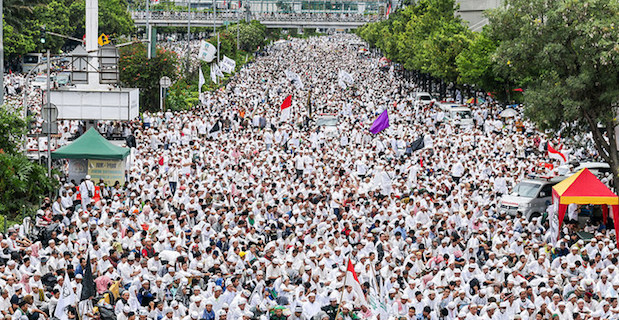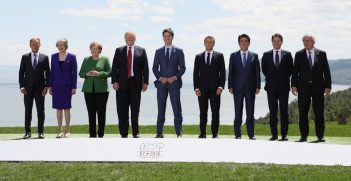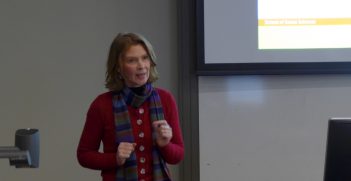Is Indonesia a Fragile State?

The influence of race and religion in Indonesian politics is being re-examined in the wake of last week’s defeat of the Christian Chinese former Jakarta Governor Ahok. What real threat does it pose to the ongoing stability of Australia’s influential neighbour?
In the novel Ghost Fleet, about China seizing the third island chain encompassing Hawaii and the subsequent counter-offensive, there is casual reference to Indonesia collapsing into anarchy and fragmentation after a second Timor war. The novel is written by technologists, but their casual assumption reflects widely held views about the fragility of the Indonesian state.
In the real world, this fear is part of the standard history, threat assessments and doctrine of the security sector in Indonesia. It is also mentioned in statements ending many Indonesia-Australia ministerial meetings, with each vowing not to interfere in the internal affairs of the other, and it motivated the two security treaties negotiated between them. But is Indonesia really so fragile and, if so, why and to what degree?
Indonesia is a big, fragmented and culturally diverse country forming the hub of two great oceans and two continents where huge volumes of shipping and aircraft transit every day. Its location also means that it has been the recipient of waves of migration and cultural influences ever since the Australian aborigines transited 50-60,000 years ago.
Around 80 per cent of Indonesia’s 250 million people are concentrated in Java and Sumatra, where about the same proportion of GDP is generated. Outside this strategic heartland, the remaining 20 per cent of the population is scattered across Bali, Kalimantan, Sulawesi, Moluccas, Papua and the Sunda Islands. Coincidentally, the strategic heartland also straddles the two busiest straits in the region, the Malacca and Sunda straits. Both factors push defence policy to focus on the west of the country and yet not ignore the vast territories to the east, a problem familiar to many countries.
These vulnerabilities do not themselves mean that Indonesia is fragile. There have been few large-scale regional separatist revolts. The immediate post-independence revolts were protests about the regime or central government policies that adversely affected regional economies off Java. True, the second Acehnese revolt did demand independence, but there were particular reasons for that and Aceh did settle for regional autonomy in 2005. East Timor was a special case because it remained on the UN decolonisation agenda. Papua is the exception to the rule.
There has never been, for example, a ‘Sumatra for Sumatrans’ movement. The reason for this is simple. The largest ethnic group is the Javanese who represent about 45 per cent of the population. The next largest group is the Sundanese and Bantenese of western Java who make up another 14 per cent of the population. No other group exceeds 5 per cent of the population and no other island is dominated by a single ethnic group as is Java.
Although sometimes resented, the Javanese provide an ethnic anchor that no other group is large enough to challenge. Nevertheless, right from the start of the nationalist movement the Javanese realised that they could not hold the country together without engaging the outer islanders. Moreover, ethnic identities have been diluted and mixed by travel for education, work, faith, urbanisation, marriage and irresistible media penetration.
Ethnic inclusion was symbolised by the presidential duo of President Sukarno and Vice President (sometimes Prime Minister) Hatta. The parliament, civil service and security agencies are all multi-ethnic and multi-cultural entities representing the diversity of the country. Any diminution of this, if only perceptually, would be a harbinger of trouble.
Some 1950s governments adopted economic policies that led to revolts in Sumatra and Sulawesi, while the centralising impulse of the authoritarian regimes of Sukarno and especially Suharto deepened regional resentment. The crash decentralisation program introduced in 1999 in the wake of Suharto’s downfall was intended to remedy that.
In addition, the nationalist movement and subsequent national myth-making have created a deeply held Indonesian identity that would be hard to displace. So, although Indonesia will continue to face challenges in Papua for decades to come, the odds of Indonesia splitting asunder on ethnic or geographic grounds are very slim—a major natural disaster, global war or succumbing to Islamic fundamentalists aside.
Islam and politics
The relationship between Islam and politics has challenged Indonesia from its earliest days: to be or not to be an Islamic state? Although 85 per cent of the population profess faith in Islam, the drafters of the provisional constitution in 1945 defeated an attempt to have Indonesia declared an Islamic state; a provision obliging Muslims to abide by Islamic laws in the preamble was also deleted at the last minute. It was argued that, once independence was gained, Islamists could promote their cause through democratic processes. Although Islamists had strong support after the 1955 elections, they have never since been able to garner sufficient votes to advance their cause at the ballot box or indeed through four constitutional amendments.
The consequence is that a small but dangerous rump of Islamists are prepared to resort to terrorism, while a larger number operate in the grey zone, some using vigilante violence and threats to promote their cause. Various international influences post-9/11 and advances in communications and travel have facilitated the resort to armed violence. It is easy to dismiss the terrorists as an isolated fringe group, but they are linked through a larger body of sympathisers, such as the Islamic Defenders Front (FPI), to the heart of the body politic, as the last presidential election and the recent election in Jakarta demonstrate.
The FPI would use more violence if it could, but its leaders know that the forces arrayed against them are currently too strong. Nevertheless, all governments have had to be careful in dealing with the proponents of an Islamic state to avoid being branded enemies of Islam. This has included compromising the separation of powers along with financial inducements to ameliorate tensions.
That Indonesia is not an Islamic state is not out of concern for the non-Muslim population of Indonesia. It is because the majority of Indonesian Muslims accept the compromise reached in 1945 and have many other cross-cutting political, economic, cultural, regional and family interests that colour their interpretation of the place of Islam in their lives. Moreover, the early nationalist movement was largely committed to democracy as the best way to embrace the diversity of the nation; the abuses of two authoritarian regimes have confirmed that belief for many.
Although Indonesia remains somewhat fragile, it is unlikely to become an Islamic state because no minority presents the level of threat that might cause the Sunni Muslim majority to unite in breaking the 1945 compact. In the unlikely event that Indonesia became an Islamic state, it would create enormous tensions within the country and great uncertainty for its neighbours, especially in the absence of any clear idea of how an Islamic Indonesian state would behave. Nevertheless, the debates will continue while the repercussions of 1945 reverberate for many years yet.
Bob Lowry is president of the AIIA ACT Branch and visiting fellow with the University of New South Wales, Canberra at the Australian Defence Force Academy.
Photograph by Abraham Arthemius.
This article is published under a Creative Commons Licence and may be republished with attribution.





